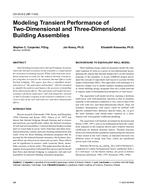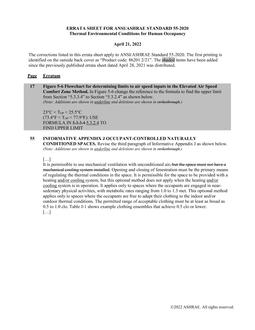The dynamic behavior of a residence.has a significant affect on the overall ability to accurately predict energy consumptions on an hourly basis. The dynamics are attributed to the changing weather conditions and the response of the residence to those changes. The response includes the dynamic behavior of the structure, the environmental control equipment, the air distribution system, the occupants, and the controls. All of these component dynamics have been studied in detail as a part of an extensive research project (1). The particular emphasis of this paper is to present the research that was completed on the dynamic behavior of the control system.
The control system in a residence consists of a thermostat located within the conditioned space and the controls internal to the environmental control equipment. Since the overall control system consists of these two components, each one will be considered separately. The controls within the equipment are considered in a companion paper (2) while this paper deals with the dynamics of the thermostat.
It was recognized early in the research (3) that the energy consumption of the equipment could be predicted within 0.52% – 3.28% error depending upon the particular furnace if the cycling rate and run time were known. This reinforced the need to obtain a better understanding of the dynamic behavior of thermostats. Therefore, a series of experimental measurements was completed to isolate the influence of the thermostat in the total system.
Citation: Symposium, ASHRAE Transactions, Volume 85, Part 1, Philadelphia, PA
Product Details
- Published:
- 1979
- Number of Pages:
- 11
- File Size:
- 1 file , 550 KB
- Product Code(s):
- D-PH-79-07A-3


